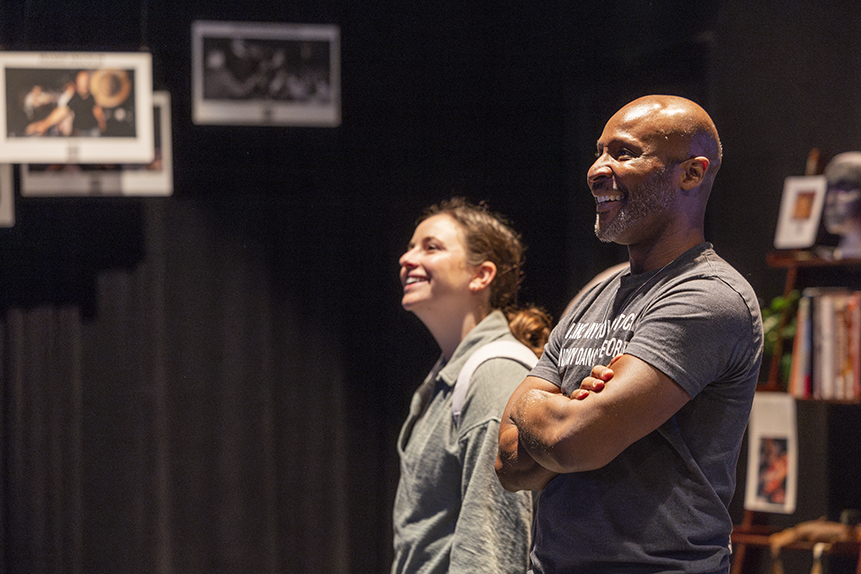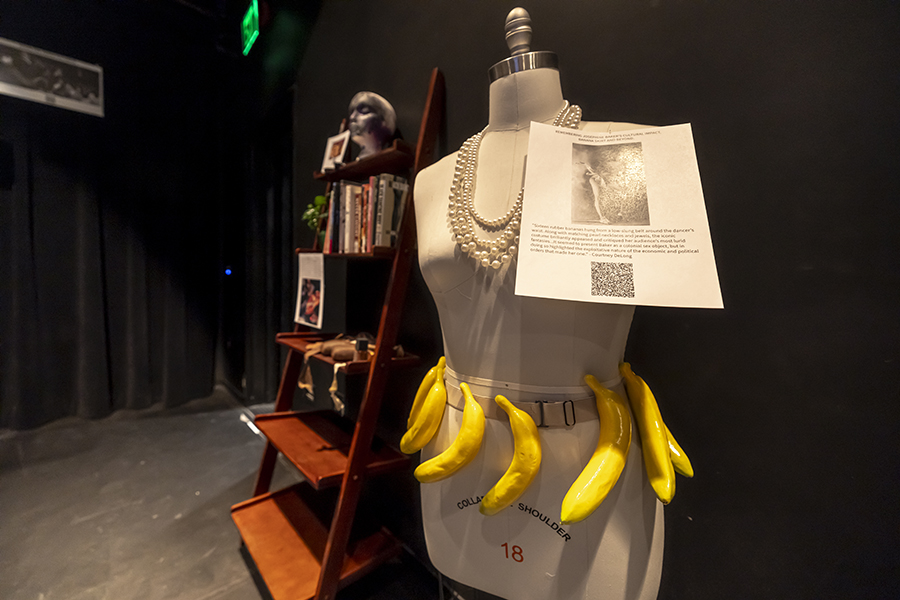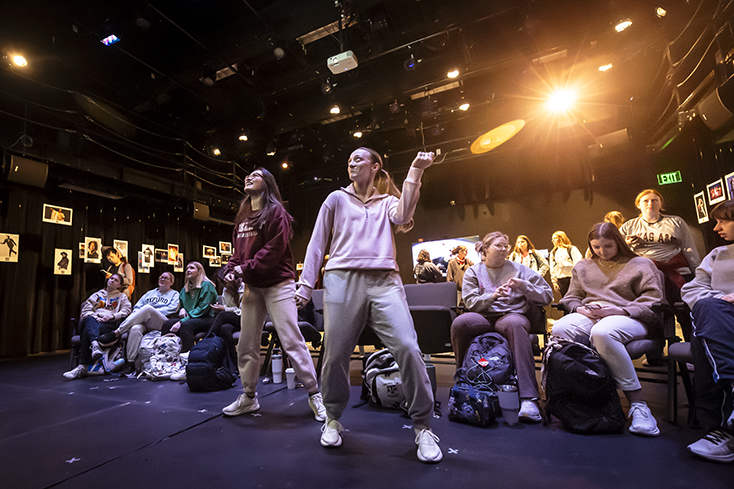Gibson Celebrates Black History Through ‘Dance Of America’ Art Installation
The history of Black dancers was on display through video footage and artwork during a recent immersive exhibit at the Black Box Theater in the Liberal Arts and Arts and Humanities Building.
Elijah Alhadji Gibson, assistant program director and lecturer in the Dance Science program, organized “Dance of America: A Celebration of Black Dance in the United States” on Feb. 29 in honor of Black History Month.
Hosted by the Dance Science program, the installation featured information, photos and video of more than 60 artists, along with an interactive timeline of the history of Black ballet dancers.
“Looking at everything in the exhibit, it makes me emotional,” Gibson said. “Without them, I would not be doing what I am doing or be where I am today.”

Gibson showcased the history of the Cakewalk, a pre-Civil War dance, by putting footprint stickers on the floor that outlined how to do the dance in a circle.
“It was originally performed by slaves on plantations as entertainment for their masters, but their masters didn’t realize that they were actually mocking them,” Gibson said.
Jomi Olufemi, a junior Biomedical Engineering student, heard about the exhibit from one of his professors. Olufemi said he was surprised to learn the history of the Cakewalk and its cultural significance.
“It is great to understand the perspective and the history of these things,” Olufemi said. “Even myself, as someone who doesn’t know anything about dance, it’s always good to know these things and have more cultural respect. It really brings the perspective of everyone’s culture together.”

A display of books about Black dance history and Black dancers was featured next to a pair of pink ballet pointe shoes that were painted to reflect a darker skin tone. It wasn’t until 2017 that companies started manufacturing ballet pointe shoes for darker skin tones, Gibson said.
“Prior to brown skin tone shoes being manufactured, we had to pancake our shoes, a technique of applying makeup to get our shoe the desired skin tone,” Gibson said. “Can you imagine what that process is like for a professional ballet dancer, considering how many pointe shoes they go through in a week? I actually stopped pancaking mine, and instead I began dyeing them in tea and coffee.”
Davie Dickinson, a senior Allied Health major and Dance minor, said she grew up fascinated with ballet. After looking at the pointe shoes on display, she noted that she never had to alter her pointe shoes because pink suited her skin tone.
“In junior high and high school, I heard about all of the petitions going around to have mainstream manufacturers make different colors of pointe shoes,” she said. “It should be mainstream. Any ballet dancer shouldn’t have to worry about finding shoes that match the color of their skin.”
A group of dance students in a Choreographic Principles class taught by Jessica Boone, visiting lecturer, filled the exhibit with excitement and readiness to learn, Gibson said.
“They came in and they were really intrigued,” Gibson said. “One of the students told me, ‘Some of the artists we have talked about in Dance History, so it was great to be able to click the QR code and read more about them.’ But it was also great to witness visitors learn of all these people that they had never heard of, being able to just connect the dots from what was then and now.”

